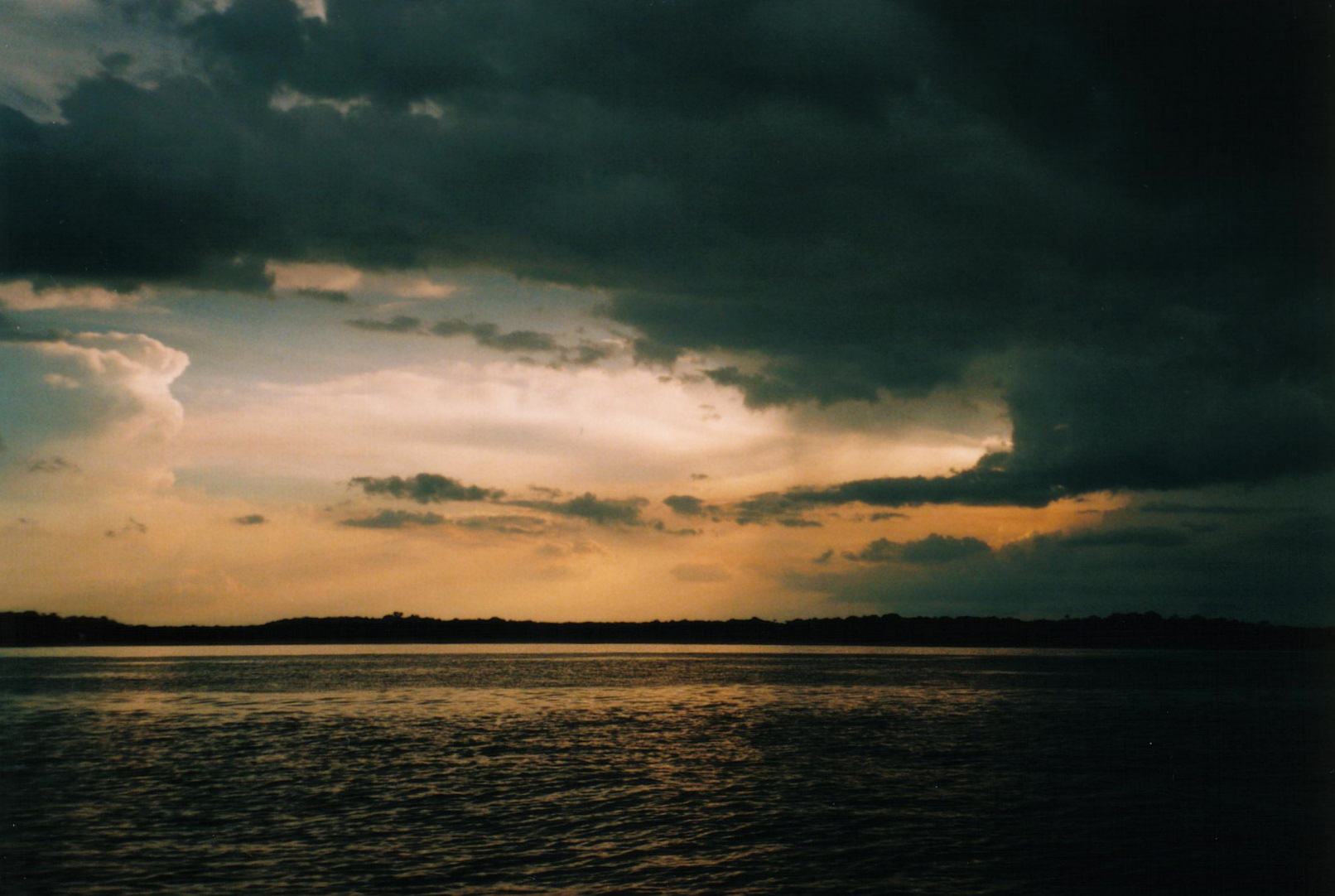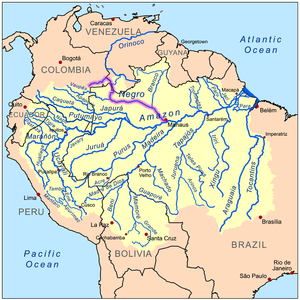By Geoffrey Lean
MANAUS – Deep in the heart of the world’s greatest rainforest, a nine-day journey by boat from the sea, Otavio Luz Castello is anxiously watching the soft waters of the Amazon drain away. Every day they recede further, like water running slowly out of an immense bathtub, threatening a worldwide catastrophe. Standing on an island in a quiet channel of the giant river, he points out what is happening. A month ago, the island was under water. Now, it juts 5m above it.
Millions of fish died, and thousands of communities whose only transport was by water were stranded.
Until recently, scientists took the same view, seeing it as one of the world’s most stable environments.
Dr Antonio Nobre, of Brazil’s National Institute of Amazonian Research, told the floating symposium of unpublished research which suggests that the felling was drying up the entire forest and helping to cause the hurricanes that have been battering the United States and the Caribbean.
The hot, wet Amazon, he explained, normally evaporates vast amounts of water, which rise high into the air as if in an invisible chimney, drawing in wet northeast trade winds, which have picked up moisture from the Atlantic.
This, in turn, controls the temperature of the ocean – as the trade winds pick up the moisture, the warm water left gets saltier and sinks.
Deforestation disrupts the cycle by weakening the Amazonian evaporation which drives the whole process.
One result is that the hot water in the Atlantic stays on the surface and fuels the hurricanes.
Another is that less moisture arrives on the trade winds, intensifying the forest drought.
As a result, she says, it dropped by 31 per cent last year.
This encouraged entrepreneurs to cut down trees to grow soya.
The symposium flew to inspect the damage this had caused – vast fields of beans destined to feed supermarket chickens in Europe, where until recently there was lush forest.
Brazilian politicians say their country has so many other pressing problems that the destruction is unlikely to be brought under control, unless the world helps. Calculations by Hylton Philipson, a British merchant banker and rainforest campaigner, reckon that doing this would take US$60 billion ($80 billion) a year – less than a third of the cost of the Iraq war. About a fifth of the Amazonian rainforest has been razed completely. Another 22 per cent has been harmed by logging, allowing the sun to penetrate to the forest floor, drying it out.
Add these two figures together and the total is perilously close to 50 per cent, predicted as the “tipping point” that marks the death of the Amazon.
Nobody knows when that crucial threshold will be passed, but growing numbers of scientists believe that it is coming ever closer.
One of Nobre’s colleagues, Dr Philip Fearnside, says: “With every tree that falls, we increase the probability that the tipping point will arrive.”
The science behind the scare
Studies by the blue-chip Woods Hole Research Centre, carried out in Amazonia, have concluded that the forest cannot withstand more than two consecutive years of drought without breaking down. Scientists say that this would spread drought into the northern hemisphere and could massively accelerate global warming with incalculable consequences. The research – carried out by the Massachusetts-based centre in Santarem on the Amazon River – has taken even the scientists conducting it by surprise.
When Dr Dan Nepstead started the experiment in 2002 – by covering a chunk of rainforest the size of a football pitch with plastic panels to see how it would cope without rain – he surrounded it with sophisticated sensors, expecting to record only minor changes.
The trees managed the first year of drought without difficulty. In the second year, they sunk their roots deeper to find moisture, but survived. But in year three, they started dying. Beginning with the tallest the trees started to come crashing down, exposing the forest floor to the drying sun.
By the end of the year the trees had released more than two-thirds of the carbon dioxide they have stored during their lives, helping to act as a break on global warming. Instead they began accelerating the climate change.
The Amazon now appears to be entering its second successive year of drought, raising the possibility it could start dying next year. The immense forest contains 90 billion tons of carbon, enough in itself to increase the rate of global warming by 50 per cent.
Nepstead expects “mega-fires” rapidly to sweep across the drying jungle. With the trees gone, the soil will bake in the sun and the rainforest could become desert.
Deborah Clark from the University of Missouri, one of the world’s top forest ecologists, says research shows “the lock has broken” on the Amazon ecosystem and the Amazon is “headed in a terrible direction”.
– INDEPENDENT









